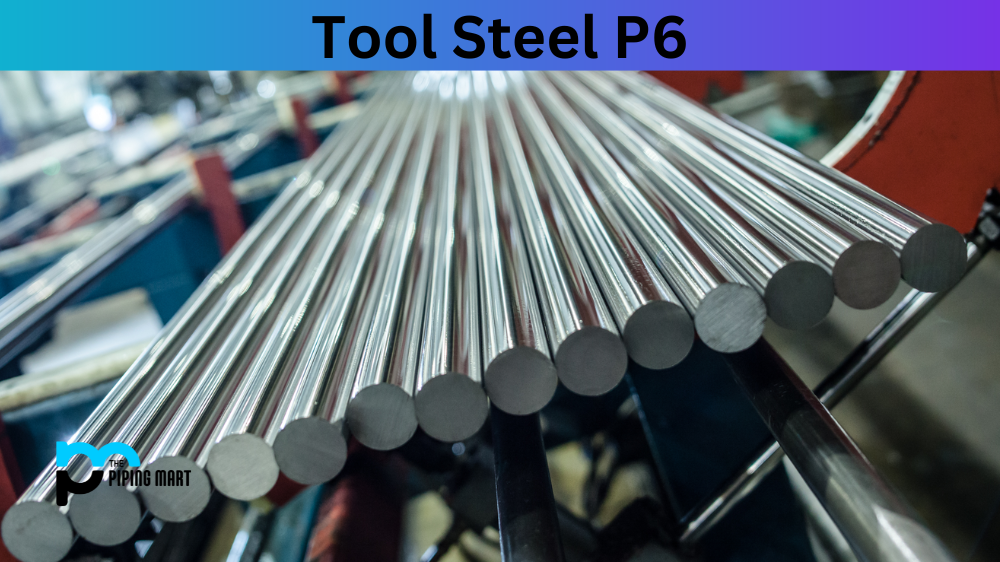Magnesium AZ61A is one of the most popular magnesium alloys used in industrial applications. It is known for its high strength-to-weight ratio, machinability, and corrosion resistance. This blog post will examine Magnesium AZ61A and discuss its composition, mechanical and physical properties, uses, corrosion resistance, heat treatment, machining, and welding.
What is Magnesium AZ61A?
Magnesium AZ61A is an alloy of magnesium, zinc, aluminium and manganese, used in various applications due to its strength-to-weight ratio and excellent castability. It is commonly used in aerospace components, sporting goods, biomedical implants, and many other industries.
Magnesium AZ61A Composition
Magnesium AZ61A is a magnesium alloy with 6% aluminium and 1% zinc. It also contains small amounts of other alloys, such as manganese, copper, and silicon. Adding aluminium and zinc improves the strength of the alloy while maintaining its lightweight properties.
| Element | Content (%) |
|---|---|
| Magnesium, Mg | 92 |
| Aluminum, Al | 5.80 – 7.20 |
| Zinc, Zn | 0.40 – 1.50 |
| Manganese, Mn | 0.15 |
| Silicon, Si | 0.10 |
| Copper, Cu | 0.050 |
| Nickel, Ni | 0.0050 |
| Iron, Fe | 0.0050 |
Magnesium AZ61A Mechanical Properties
Magnesium AZ61A has a tensile strength of 310 MPa and a yield strength of 200 MPa. It has a high modulus of elasticity, making it ideal for applications requiring strength and flexibility. AZ61A also exhibits good ductility, which means it can be formed into complex shapes without cracking or fracturing.
| Properties | Metric | Imperial |
|---|---|---|
| Tensile strength | 310 MPa | 45000 psi |
| Yield strength (@ strain 0.200%) | 230 MPa | 33400 psi |
| Compressive yield strength (at 0.2% offset) | 130 MPa | 18900 psi |
| Ultimate bearing strength | 470 MPa | 68200 psi |
| Bearing yield strength | 285 MPa | 41300 psi |
| Shear strength | 140 MPa | 20300 psi |
| Shear modulus | 17 GPa | 2470 ksi |
| Elastic modulus | 44.8 GPa | 6498 ksi |
| Poisson’s ratio | 0.35 | 0.35 |
| Elongation at break (in 50 mm) | 16% | 16% |
| Hardness, Brinell (500 kg load, 10 mm ball) | 60 | 60 |
| Hardness, Knoop (estimated from Brinell) | 80 | 80 |
| Hardness, Vickers (converted from Brinell hardness) | 68 | 68 |
| Machinability (relative rating, 100=best) | 100 | 100 |
| Charpy impact | 4.10 J | 3.02 ft-lb |
Magnesium AZ61A Physical Properties
This alloy has a 1.8 g/cm³ density, significantly lighter than steel and aluminium. It has a melting point of 620°C and a thermal conductivity of 76.3 W/mK. Magnesium AZ61A is non-magnetic and has a low electrical conductivity, making it useful for applications with undesirable electrical and magnetic properties.
| Properties | Metric | Imperial |
|---|---|---|
| Density | 1.80 g/cm3 | 0.0650 lb/in³ |
Magnesium AZ61A Thermal Properties
| Thermal Properties | Metric | Imperial |
|---|---|---|
| Thermal expansion co-efficient (@ 0-100°C/32-212°F) | 26 µm/m°C | 14.4 µin/in°F |
| Thermal conductivity (estimated from trends in similar Mg alloys) | 70 W/mK | 486 BTU in/hr.ft²°F |
Magnesium AZ61A Uses
Magnesium AZ61A has many applications in the aerospace, automotive, and electronic industries. It is used to manufacture aircraft and automotive parts such as wheels, engine components, and transmission cases. It also produces electronic devices such as laptops, cameras, and cell phones. Magnesium AZ61A’s unique combination of strength and lightweight properties make it ideal for applications where reducing weight is critical.
Magnesium AZ61A Corrosion Resistance
Magnesium AZ61A has good corrosion resistance compared to other magnesium alloys, but it is still susceptible to corrosion when exposed to water, salts, and acidic environments. Coatings such as chromate, anodize, and protective paint can be applied to the magnesium surfaces to improve corrosion resistance.
Magnesium AZ61A Heat Treatment
Magnesium AZ61A can be heat treated to improve its mechanical properties. The alloy can be annealed to reduce its hardness and improve ductility. It can also be aged to increase its strength and hardness. Age hardening involves heating the alloy to a specific temperature and holding it for some time before cooling it down.
Magnesium AZ61A Machining
Magnesium AZ61A is known for its excellent machinability, making it easy to cut, drill, and form. However, during machining, care must be taken to prevent sparking, which can lead to a fire hazard. Exceptional cooling and lubrication measures are also necessary to avoid overheating and to prolong tool life.
Magnesium AZ61A Welding
Welding Magnesium AZ61A can be challenging due to its high reactivity with atmospheric gases. The alloy’s high thermal conductivity also maintains the correct temperature during welding. Difficult to prevent cracking and porosity, it is recommended to use a welding technique called gas tungsten arc welding (GTAW) or plasma arc welding.
Conclusion
Magnesium AZ61A is a versatile magnesium alloy with excellent strength-to-weight ratio, high machinability, and good corrosion resistance. Its unique combination of properties makes it ideal for use in the aerospace, automotive, and electronics industries. By understanding its composition, mechanical and physical properties, uses, corrosion resistance, heat treatment, machining, and welding, manufacturers can make the most of Magnesium AZ61A for their various production needs.

Abhishek is a seasoned blogger and industry expert, sharing his insights and knowledge on various topics. With his research, Abhishek offers valuable insights and tips for professionals and enthusiasts. Follow him for expert advice on the latest trends and developments in the metal industry.




